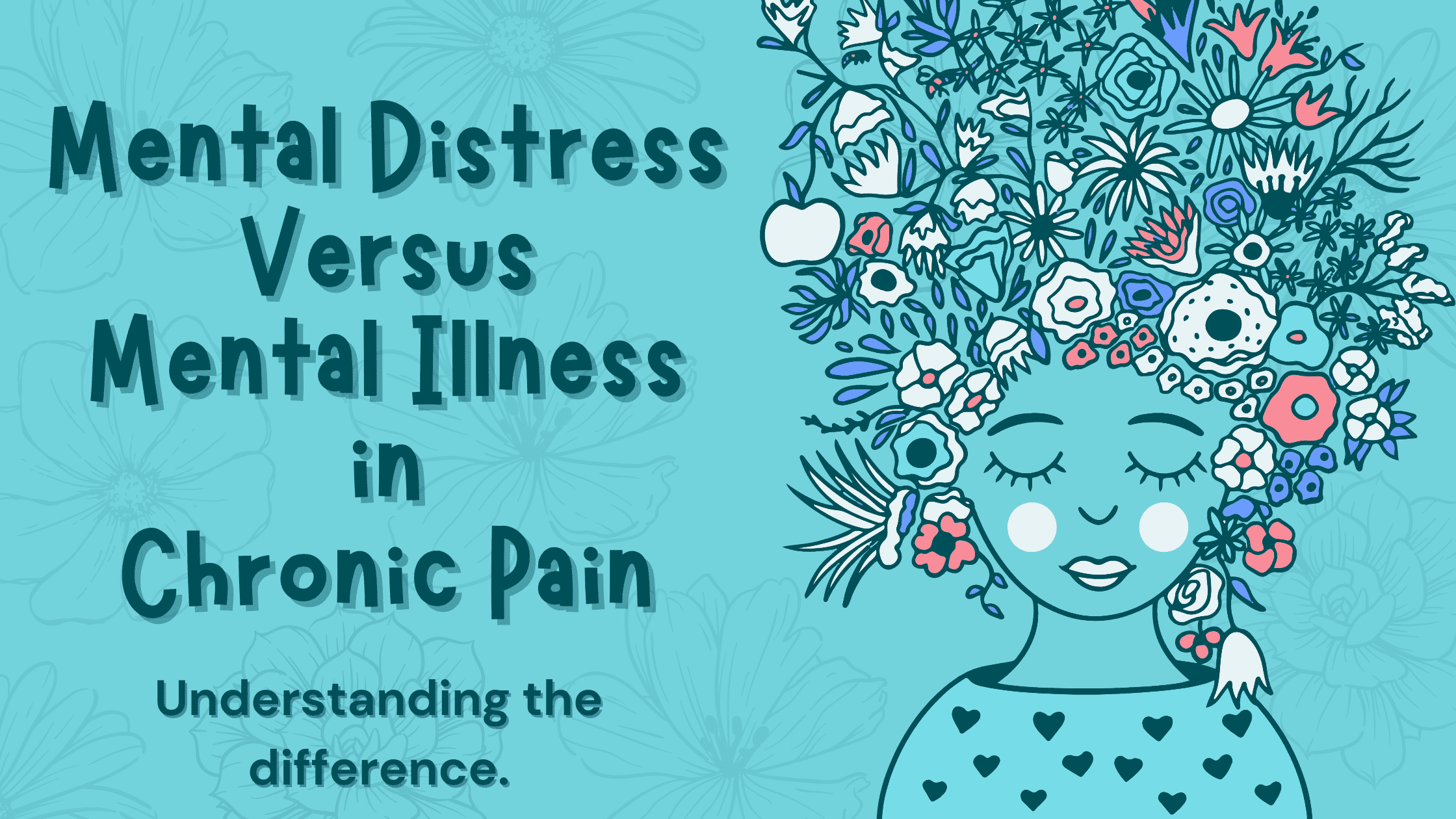Can the type of food you eat help ease the pain? Is a particular diet able to reduce the pain associated with various health conditions? Read on as we explore some of the current evidence around diet and pain. This is Part 1 of a 2-part series.
[Go here for Which Diet Works for Pain? [The Evidence] Part 2]
Nutritional interventions are often necessary for reversing chronic pain. A simple diet change that removes inflammatory foods and replaces it with better choices, can often reverse the most difficult-to-treat conditions. Many chronic health conditions, including pain, are due to an imbalance in the body’s biochemistry, hormones and neurotransmitters. These problems stem from years of consuming a diet that lacks certain nutrients, an overabundance of stress, a lack of exercise, increased inflammation, insulin resistance, infections, environmental toxins as well as genetic components. Though standard treatment often consists of pills, injections, or surgery, many conditions can be corrected with proper nutrition.
Wouldn’t it be great if you could ease your pain just by changing what’s on your plate?
What you choose to eat can have a great impact on your overall health, often resolving pain.
Let’s dive into some of the scientific research available for a few of the common diets as they relate to pain conditions. This is by no means an exhaustive list, but it serves to demonstrate the power of food over pain.
The Mediterranean Diet
It is likely that you have heard of the Mediterranean Diet, claimed to be among the world’s most healthy ways of eating. Year after year, U.S. News and World Report has ranked it among the top diets (1). Do you need to jet off to Italy or the Spanish coast in order to eat a Mediterranean Diet? Not at all. To master this style of eating, travel is unnecessary, except maybe to your local farmer’s’ market or organic grocery store. You just have to make sure that fresh, healthy ingredients find their way onto your plate every day.
What you choose to eat can have a great impact on your overall health, often resolving pain. Share on XThe Components of the Mediterranean Diet
The Mediterranean Diet is a collection of dietary habits that are common to people residing in countries that border the Mediterranean Sea. There is no one single Mediterranean Diet, but the many versions share some common characteristics: a high consumption of fresh fruits, vegetables, legumes, whole grains, nuts, seeds and olive oil; a moderate intake of fish and poultry; a lower consumption of red meat, dairy and saturated fatty acids; and a low-moderate alcohol consumption (2).

The plentiful fruits and vegetables on a Mediterranean Diet provide the necessary daily fiber for gastrointestinal health, plus a myriad of antioxidants (nutrients that scavenge the free radical molecules that damage your body’s cells). You will often see vegetables on the menu for every meal. Some staples include leafy greens, arugula, artichokes, beets, fennel, tomatoes, cucumbers, onions, garlic, and olives. Common fruits are figs, peaches, citrus fruits and pomegranates. Much of the protein sources come from fish and legumes. The Mediterranean Diet is probably most well-known for its liberal use of olive oil. People following this diet also use many fresh and dried herbs and spices.
What is not on a Mediterranean-style diet? Fast food, packaged and highly-processed foods. The Mediterranean Diet is incorporated into a larger lifestyle that focuses on eating meals slowly and with enjoyment, not just squeezed into the day. Meals are part of a daily ritual and are meant to be savored and enjoyed.

Benefits of the Mediterranean Diet
There is plenty of research to support the Mediterranean Diet’s proposed benefits, which include protecting heart and gastrointestinal health, as well as improving cognitive function (3)(4). In addition, due to the diet’s ability to regulate blood sugar, evidence shows it may help prevent diabetes (5). Recent studies support a protective role against both breast and gastric cancer (6)(7). This diet is anti-inflammatory, and is associated with a reduction in overall mortality (9%), mortality from cardiovascular disease (9%), from the incidence or mortality from cancer (6%), and the incidence of Parkinson’s and Alzheimer’s diseases (13%) (8). The Mediterranean Diet lowers inflammatory markers such as high-sensitivity C-reactive protein (hs-CRP), interleukin (IL0-6, IL-7, and IL-8. It also has been shown to decrease insulin resistance (9). As an anti-inflammatory diet, it can help reduce the pain that accompanies many chronic illnesses.
How the Mediterranean Diet Helps Pain
Rheumatoid Arthritis
Shifting to a Mediterranean Diet can reduce the activity of many diseases as well as improve physical function and relieve pain. Studies show an improvement in symptoms among Rheumatoid Arthritis patients who adopted a Mediterranean Diet. Commonly observed benefits included:
● a decrease in the number of tender and swollen joints
● improvement in morning stiffness
● an increase in grip strength
● reduction in the overall pain index (10)(11).
Osteoarthritis
Patients with osteoarthritis have found relief by adopting a Mediterranean style diet. A study showed that sCOMP (serum cartilage oligomeric matrix protein), a marker of cartilage degradation, as well as other inflammatory markers, including IL-1-alpha, were reduced for those on a Mediterranean Diet. These patients enjoyed an increased range of motion in their knees and hips (12). Frailty is a complex clinical syndrome that is associated with a decline in physical function and mobility. It is characterized by an increase in inflammation. In a study of older adults, a higher adherence to a Mediterranean type of diet was inversely associated with the development of frailty. The patients in this study had a slower decline of mobility (13).

Inflammatory Bowel Disease and Irritable Bowel Syndrome
The Mediterranean Diet, which is rich in fiber and plant-based foods, may have a therapeutic effect on the pain and discomfort of Inflammatory Bowel Disease (IBD). This protection is hypothesized to be derived from the balance in the omega-6/omega-3 fatty acid ratio of the Mediterranean Diet, as well as the beneficial effect it has on the intestinal microbiome (14). In people prone to gastrointestinal issues such as Irritable Bowel Syndrome (IBS), research shows an inverse relationship between the adherence to a Mediterranean type diet and painful symptoms. Those consuming meals higher in unhealthy fats reported more abdominal bloating and discomfort (15).
Shifting to a Mediterranean Diet can reduce the activity of many diseases as well as improve physical function and relieve pain Share on XGout
Nutritional behaviors play a role in the development of gout. Excessive intake of alcoholic beverages, meat, soft drinks and fruit juices increase the risk of developing gout (16). The adoption of a Mediterranean style diet has been shown to lower serum uric acid levels, reducing the likelihood of hyperuricemia. This dietary pattern can benefit patients with hyperuricemia and gout (17).
Neurodegenerative Disease
The Mediterranean Diet also shows promise for those suffering from cardiovascular and chronic neurodegenerative conditions such as Parkinson’s Disease. Moderate consumption of fish is associated with a lower incidence of ischemic strokes, subclinical infarcts and white matter abnormalities on MRI examinations. Research suggests an overall reduction in Parkinson’s, Alzheimer’s Disease and mild cognitive impairment with adherence to a Mediterranean style diet (18).

Click here to learn how to use nutrition to treat chronic pain!
The Mediterranean Diet is a popular diet, is supported byevidence based medicine and one that can be easily implemented. It allows a wide variety of fresh, healthy foods that can be cooked in many different ways. It lends itself to eating out if one chooses dishes with clean protein, vegetables, salads and legumes, while avoiding highly processed and packaged foods with unhealthy carbohydrates and fats.

The Ketogenic Diet
The ketogenic diet is a low-carbohydrate, high-fat, and moderate protein diet that can offer many health benefits (19). It is probably most known for the treatment of epilepsy and difficult-to-control seizures in children, but there is current evidence that shows this diet can help with weight loss and diabetes (20). Evidence also points to the possibility of therapeutic benefits for those suffering from cancer and Alzheimer’s disease (21)(22).
The ketogenic diet drastically reduces carbohydrate intake and replaces the carbs with healthy fat. By reducing the carbohydrates, your body is put into a metabolic state called ketosis (23). During ketosis, your body becomes extremely efficient at burning fat for energy. It turns fat into ketones in the liver, which supply energy for the brain. In ketosis, your metabolism is running off fatty acids, or ketone bodies, instead of glucose (from carbohydrates). A ketogenic diet can help lower blood sugar and improve insulin sensitivity, thereby reducing the risk for type 2 diabetes and prediabetes (24). The diet is anti-inflammatory, which may reduce the risk of chronic disease.
Components of a Ketogenic Diet
A low-carbohydrate ketogenic diet consists of meats (fish, beef, lamb, poultry), eggs, high-fat dairy* (hard cheeses, high-fat cream, butter, etc.), nuts and seeds, avocados, berries, leafy greens (spinach, kale, arugula, Romaine, etc.), above ground vegetables (broccoli, cauliflower, cabbage, etc.), sweeteners (stevia, erythritol, monk fruit), and other fats (coconut oil, olive oil, and other animal fats).

The ketogenic diet removes all grains (wheat, corn, rice, cereals, breads, pastas, etc.), sugar (honey, agave, maple syrup, etc.), fruit (bananas, oranges, pineapple, etc.), tubers (potatoes, yams, etc.) and legumes. Most of the carbohydrates on the diet will come from vegetables, nuts, and dairy.
Examples of a ketogenic meal are: chicken breast basted in olive oil, with broccoli and cheese, or steak topped with a pat of butter, and a side of spinach sauteed in olive oil.
*A note about dairy: some people in the keto community refrain from dairy. Sensitivities can occur in those with Inflammatory Bowel Disease (25). In addition, studies show it may trigger leaky gut, inflammation, pain, and autoimmune-related symptoms (26)(27). A 2014 observational study of Swedish men and women found that an increase in milk consumption was associated with a greater incidence of hip fracture (28).
Benefits of a Ketogenic Diet
The ketogenic diet has been used clinically for over 80 years, primarily for the symptomatic treatment of epilepsy. There is evidence that the diet can also provide disease-modifying activity in a large range of neurodegenerative diseases such as Alzheimer’s disease and Parkinson’s disease (29).
Those on a ketogenic diet can enjoy increased energy and a normalization of hunger. Weight loss is common, and many people report increased mental performance (30). A keto diet has been shown to regulate blood pressure, as well as improve triglyceride and cholesterol levels (31). Research shows that a low-carb, ketogenic diet can lower insulin levels to healthy ranges, reducing the risk of insulin resistance and type 2 diabetes. Some even report improvements in skin conditions such as acne (32).
How a Ketogenic Diet helps Pain
Diseases of Inflammation
Many painful conditions involve chronic inflammation. The ketogenic diet is shown to reduce inflammation since compared to glucose metabolism, ketone metabolism produces fewer reactive oxygen species, which are known to cause inflammation (33). The diet appears to involve inhibition of pro-inflammatory pathways involving Nuclear Factor kappa B (NFkB) (34). In addition, evidence shows that a ketolytic metabolism elevates the levels of adenosine, a neuromodulator that has long been known to be anti-inflammatory (35). An animal model demonstrated that the ketogenic diet can reduce inflammation, which may be helpful for inflammation-associated pain (36).
Diabetes
Evidence suggests that a ketogenic diet can reverse diabetic neuropathy in rats, and it is thought that the diet could treat pain as well as other symptoms of diabetes (37).
Migraines
In a number of clinical studies, it was demonstrated that a ketogenic diet was more effective than a standard diet in reducing the frequency and duration of migraines (38)(39). Researchers suggest that the efficacy in the keto diet in regard to headaches may be its ability to enhance mitochondrial energy metabolism and counteract inflammation of neurons (40).

Rheumatoid Arthritis
A ketogenic diet significantly increased DHEAS (dehydroepiandrosterone sulphate) concentrations in Rheumatoid Arthritis patients. Low levels of DHEA are associated with aging and disease states, and correlate to immune dysfunction, inflammation and osteoporosis (41).
Parkinson’s Disease
A keto diet shows promise for neuroprotection and help in the disease-modifying effects of neurological conditions such as Parkinson’s disease. In a mouse model, it was shown that the ketogenic diet protected dopaminergic neurons of the substantia nigra in the brain against neurotoxicity (42). A human study showed improvement in Parkinson’s symptoms within one month on a ketogenic diet (43).
A keto diet shows promise for neuroprotection and help in the disease-modifying effects of neurological conditions such as Parkinson’s disease Share on XGout
One of the ketone bodies, beta-hydroxybutyrate (BHB) is anti-inflammatory and may serve as a treatment for gout (44).
Traumatic Brain Injury
An animal study found that a ketogenic diet can reduce concussions and aid in recovery after a traumatic brain injury (45).

The Ketogenic Diet can be a vast departure from the way many people are used to eating, and it is more difficult to adhere to. This diet has been used in the weight loss community for a long time. It has proven success for epilepsy, and there is growing evidence that it may benefit many chronic disease and pain conditions. However, a keto diet might not be right for everyone. To implement it correctly, it may be prudent to discuss the diet with your nutrition professional.
 The Plant-Based Diet
The Plant-Based Diet
A plant-based diet is enjoying popularity, as many people are trying to eat healthy, avoiding factory-farmed meats, and aiming to reduce lifestyle-related diseases. Whatever the reason, evidence shows adding healthy vegetables and fruits can do wonders for your health. The plant-based diet is good for the heart, weight management and has been shown to improve glycemic control and other factors related to type 2 diabetes (46).
Components of a Plant-based Diet
The Plant-based diet is centered around whole, unrefined (or minimally refined) plants. Meat products (beef, poultry, seafood), as well as dairy and eggs, are only consumed occasionally. Highly refined products are not allowed, such as bleached flours, sugars and oils. The diet consists of fruits, vegetables, tubers and starchy veggies (potatoes, yams, squashes), whole grains (millet, quinoa, barley, rice, whole wheat, oats), and legumes (lentils, kidney beans, chickpeas, lima beans, black beans). The plant-based diet is not necessarily vegan (no animal products consumed), but bases the bulk of the diet on whole plant foods. Though percentages vary, plants can make up 70-80% of the diet.
 Benefits of a Plant-based Diet
Benefits of a Plant-based Diet
People who eat primarily plant-based diets exhibit a lower incidence of heart disease, stroke and cancer. Those following this diet show increased serum levels of alpha- and beta-carotenes, lycopenes, lutein, vitamin C and vitamin E. Plant-based diets are lower in the arachidonic acids, which are precursors to pro-inflammatory prostaglandins and leukotrienes, which can lead to inflammatory conditions and pain (47).
How a Plant-based Diet helps Pain
Pain from Inflammation
The principal mechanism by which a plant-based diet reduces subjective pain may be the result of regulation of the fatty acid profile and reduction of inflammatory substances. The standard American diet is high in arachidonic acid, which creates proinflammatory prostaglandins and leukotrienes. Nonsteroidal anti-inflammatory drugs (NSAIDs) work to lower pain by limiting the metabolism of arachidonic acid. Arachidonic acid is found in animal foods and some vegetable oils. By adopting a plant-based diet, the production of painful prostaglandins can be reduced (48).
Osteoarthritis
There is evidence that a whole-foods, plant-based diet significantly improves measures of functional status, and reduces pain among osteoarthritis patients (49).
Rheumatoid Arthritis
Previous studies also show that diets rich in omega-3 and plant proteins tend to decrease pain in patients suffering from Rheumatoid Arthritis and fibromyalgia (50).
Fibromyalgia
Two other studies demonstrated improvements in fibromyalgia symptoms when subjects followed a vegan diet and a raw vegetarian diet (51).
Diabetes
A plant-based diet can help clinical symptoms and pain in diabetic neuropathy. Risk of complications from type 2 diabetes is lowered due to the improvement seen in glycemic control, blood lipid concentrations and blood pressure when following a diet full of vegetables, fruits, legumes and whole grains. In one study 81% of participants experienced a complete remission of burning pain and an improved sense of touch, and the remaining participants reported partial symptomatic relief (52).
Migraine
Migraine sufferers find a reduction in pain by adopting a plant-based diet. The numerous antioxidant and anti-inflammatory compounds may serve to reduce the neurogenic inflammation and vasodilation in migraines (53).
Crohn’s Disease
A small Japanese study involving patients with Crohn’s disease reported 100% remission rate after one year and a 92% success rate after two years when subjects were put on a semi-vegetarian diet. Small amounts of eggs, dairy and meat were allowed (fish once a week, meat every two weeks) (54).

The plant-based diet is an easy to understand diet that most people are able to adhere to. Working with a health professional will help guarantee that micronutrient status is optimal. A diet rich in vegetables, fruits, legumes, nutsand seeds is anti-inflammatory and detoxifying (55).

Fasting or Intermittent Fasting
Periods of deliberate fasting are practiced worldwide and are based on cultural or religious reasons. Fasting or intermittent fasting is gaining popularity today for weight loss and overall health. A total fast is a restriction of solid food, and a modified fast consists of consuming 200-500 kcal per day. Intermittent fasting can involve a long overnight fast or one where a single meal is consumed during the day.
 Benefits of Fasting/Intermittent Fasting
Benefits of Fasting/Intermittent Fasting
There is much evidence that fasting can help with rheumatic diseases, hypertension, metabolic syndrome, and most chronic degenerative and inflammatory diseases. Intermittent fasting may also be helpful as an accompanying treatment during chemotherapy for cancer. Further benefits of fasting include fasting-induced mood enhancement (56).
Dr. Tatta’s simple and effective pain assessment tools. Quickly and easily assess pain so you can develop actionable solutions in less time.
How a Fasting/Intermittent Fasting helps Pain
A number of mechanisms point to the healing effects of fasting, including fasting-induced neuroendocrine activation and hormetic stress response, an increase in the production of neurotrophic factors, reduced mitochondrial oxidative stress, a reduction of signals associated with aging, and increased autophagy (57). The anti-inflammatory, pain-relieving, anti-nociceptive effects of fasting and caloric restriction have been well documented (58).
Rheumatoid Arthritis
Research has demonstrated that medically supervised modified fasting (200-500 kcal per day) for periods between 7-21 days is beneficial for treating rheumatic diseases and chronic pain syndromes. Randomized controlled studies have shown that fasting, followed by a vegetarian diet, reduced pain in patients suffering from Rheumatoid Arthritis (59).
Fibromyalgia
Those with both Rheumatoid Arthritis and fibromyalgia report that fasting and skipping meals helps alleviate their symptoms (60). A study of patients with fibromyalgia who fasted experienced a greater improvement than non-fasters (61).
Osteoarthritis
Patients with moderate osteoarthritis found symptomatic relief with fasting therapy that included three pre-fast days, eight fasting days (300 kcal per day) and then four re-feed days (62).
Nerve Degeneration
Current research is exploring the effects of calorie restriction and intermittent fasting on age-related nerve degeneration. Animal models show intermittent fasting alleviates neuropathy and improves the quality of the protective myelin proteins around the nerves (63).

Fasting has been done for centuries, and research shows it can be beneficial for overall health. Since people are used to eating at least three times per day, it may be difficult for some to implement. However, it is an easy concept to understand. Those who fast should make sure they stay hydrated throughout the process. Consultation with a health provider is recommended, especially if chronic conditions are present. Fasting or intermittent fasting can be an effective way to reduce pain, as growing evidence demonstrates.

What is the best diet for pain? Here, we looked at just a few diets and how they can address pain issues. However, there is no one ‘right’ diet. What works for one may not work for another. The best diet is the one that works for you. Everyone has unique bio-individuality and specific issues when dealing with their own health. The diets discussed above all have science to back up their effectiveness with pain conditions. Talk with your health professional to determine what may be appropriate for you, taking into considerations your likes, dislikes, particular issues, your environment, and your lifestyle.
Stay tuned for Part 2 where we will continue discussing various diets and their impact on pain. Let me know if you embark on any of the diets presented here or if you are a practitioner who is using nutrition to help those with chronic pain.




